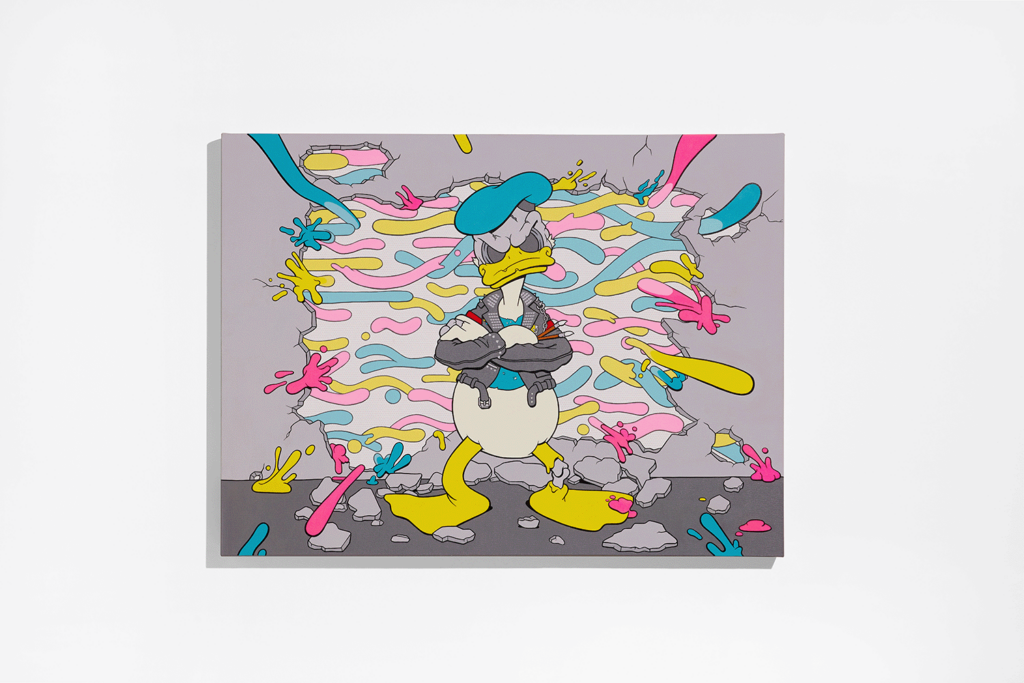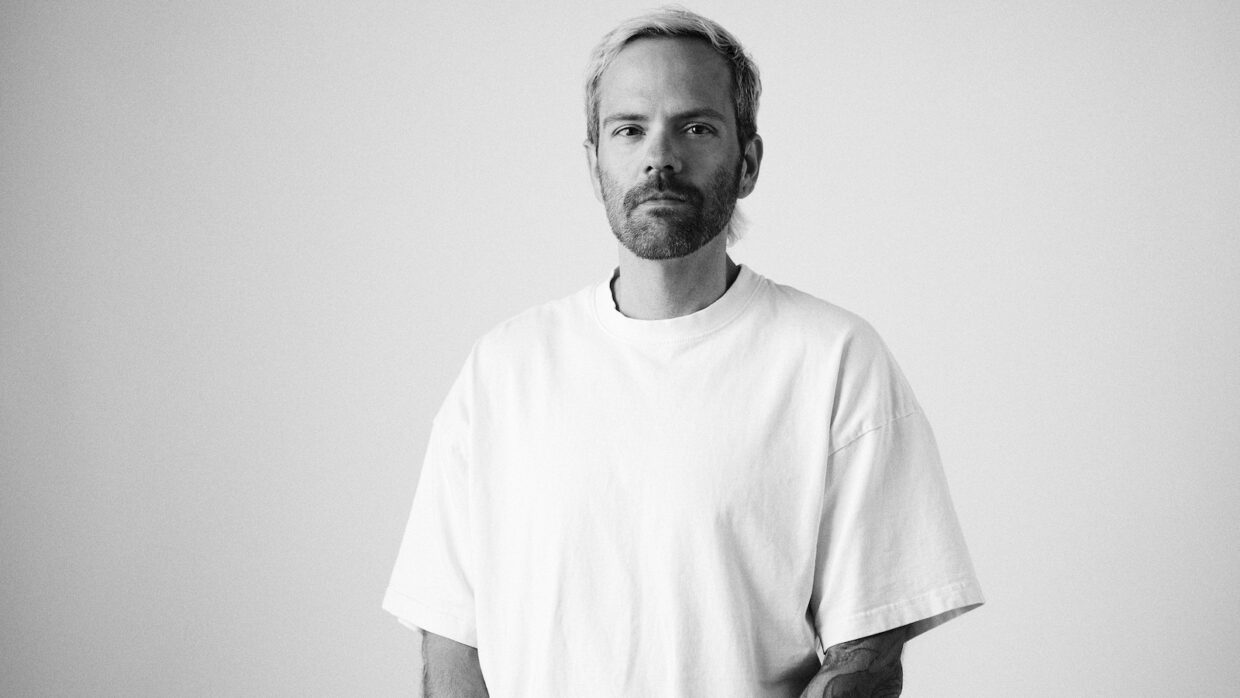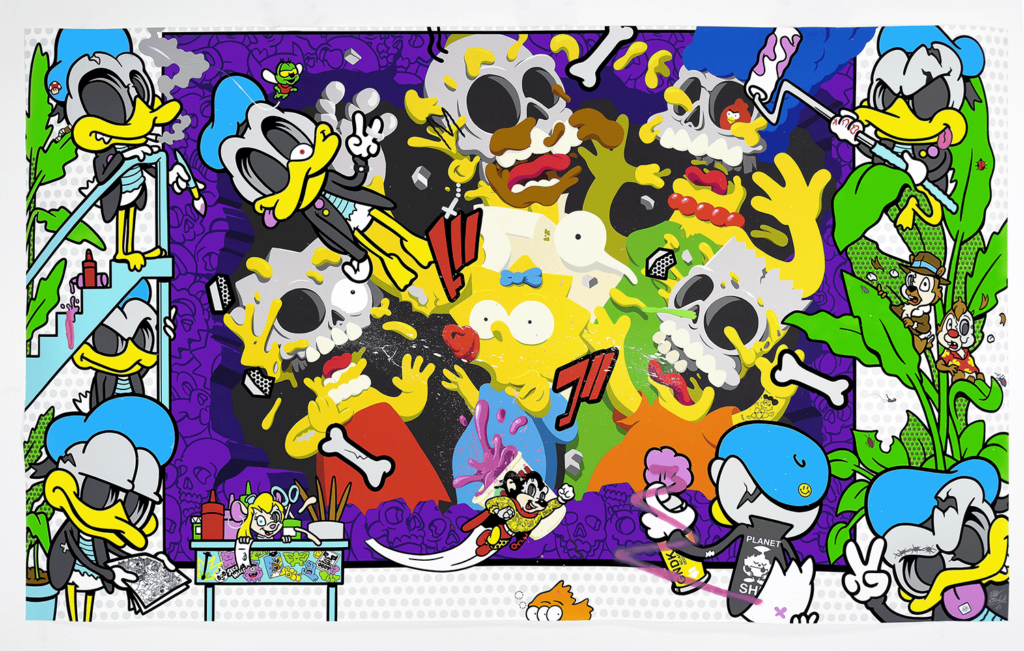|
Getting your Trinity Audio player ready...
|
Deconstructive Pop Artist Matt Gondek merges the rebellious spirit of punk rock with the dynamic world of digital art, making him a standout figure in both the traditional and crypto art scenes. Born in 1982 in Pittsburgh and now a creative force in Los Angeles, Gondek’s art is a vibrant homage to the 90s, yet it speaks profoundly to the digital age.
Gondek’s signature style, characterized by the explosive deconstruction of iconic cartoon characters, is not just a visual spectacle but a commentary on the ephemeral nature of fame and the digital transformation of cultural icons. His foray into NFTs and digital collectibles has positioned him at the forefront of a movement that blends art with blockchain technology, appealing to a new generation of art enthusiasts and collectors.
As an entrepreneur and the host of the Clean Break podcast, Gondek offers invaluable insights into the convergence of art, business, and technology. His discussions often explore how artists can navigate and thrive in the digital age, particularly within the burgeoning field of crypto art. His clientele, including celebrities like J Balvin and The Weeknd, underscores his broad appeal and the growing interest in art forms that transcend traditional mediums.
Your work is renowned for its explosive deconstruction of iconic pop culture characters. Can you share the moment or inspiration that led you to this unique style of ‘creative destruction’? How does this approach reflect your views on contemporary pop culture and its impact on society?
My journey into Deconstructive Pop art began around 15 years ago while working on a freelance illustration job. I was assigned to draw Mickey Mouse in various poses and actions. As I grew bored, I started drawing him in unconventional situations, including one where his head was exploding in surprise. This particular drawing ended up in a stack of 100 others, largely forgotten.
Fast forward about a year, I found myself grappling with uncertainty about my career path. During a period of exploration, where I was trying out different things to discover my interests, I decided to try painting. For my first painting, I randomly chose the Mickey Mouse drawing with the exploding head.
Although it was hard to start traditional painting (having primarily worked digitally until then), I found immense satisfaction in creating something tangible. Right then and there, I decided to develop an entire series of paintings featuring “exploding head characters,” and the rest is history.
As a self-taught artist who has also excelled as an entrepreneur, what key business strategies have you employed to navigate and succeed in the competitive art world? How do you balance the commercial aspects with maintaining the integrity and authenticity of your art?
Thank you for the compliment! While most people know me for my fine art, I spent a good 8 or 9 years solely doing freelance illustration work prior. It was during those years where I experienced a whole gamut of good and bad clients, not getting paid, making and selling merchandise, cold emailing prospects, etc., etc. I feel like I did everything wrong for so long, but I was learning constantly.
When I transitioned from freelance illustration to fine art, I took all those lessons and applied them to selling my new work. The key lesson was having confidence in myself and the work. I think so many amateur artists are afraid to speak about their art and their worth. Although in the beginning, I was selling my fine artwork for low prices, I stood firm on those prices and didn’t back down from them.
On the commercial side, I think it’s so important for fine artists today to treat their practice a little bit like a “brand,” and the occasional commercial project or collaboration definitely helps with that. There’s just so much noise and competition now that branding yourself and having a “thing” that you’re known for helps immensely. Going back to that confidence I mentioned, while it’s important to work on the occasional commercial project (for both exposure to a new audience and payment), it’s very important to only work with brands that align with your style and values. When you’re successful and the work is popular, every company trying to make money will come out of the woodwork – some of them dishonest. It’s vital to take the time to evaluate all opportunities and not jump at the first one.

Your work is deeply rooted in the 90s experience and punk rock ethos. How have these influences shaped your artistic voice, and how has your style evolved over the years? Are there any other movements or artists that have significantly influenced your work?
I grew up loving punk rock and playing in those types of bands. Just like hip-hop, a lot of the do-it-yourself, anti-authority, stick up for yourself ethos that comes from that culture was baked into me at a very early age.
I believe that mass corporation mascots like Mickey, Bugs Bunny, Bart Simpson, etc., are our modern-day gods. They’ve blanketed the planet and have mass appeal and influence. Being anti-authority by nature, my work is a response to that – trying to destroy or tear down those authoritarians.
On a much less punk rock side, I grew up in Pittsburgh, Pennsylvania – the birthplace of Andy Warhol, and he cast a huge shadow over me and my art business. I’ve always admired people like him: Jeff Koons, Murakami, KAWS – individuals who grew their artwork into so much more than just themselves.
Through your ‘Clean Break’ podcast, you’ve created a platform for artists to share their stories and insights. What motivated you to start this podcast, and what has been some of the most surprising or enlightening moments you’ve experienced while hosting it?
It is incredibly difficult to support yourself through what you create. My definition of success will be different from another artist’s, and vice versa. There’s not one blueprint or roadmap – but an extremely jumbled highway. The idea of Clean Break is to interview successful working creators and ask them about their journeys in the hope that listeners can pick up a little from one guest, a little from another, and mold their own path to support themselves through their creations.
The art world is guarded, and when I started making moves, I was shocked to see how many closed doors and secrets there were. Clean Break’s goal is to smash those doors down and lay all the cards on the table. Collective knowledge so we can all rise together, not just the selected few.
I’ll share one surprising thing here – I didn’t realize when I started the podcast that the overall majority of my guests had to move away from where they grew up to become successful.

“Deconstructed Mouse Toy”. Image: Matt Gondek Studio
Looking ahead, what new frontiers are you excited to explore in your art? Are there particular themes or mediums you’re eager to tackle? Additionally, what do you see as the biggest challenges facing artists today, especially in the realm of pop art and digital creation?
I am really interested and excited about AI right now in terms of artwork. Many people are worried it will take jobs, and honestly, we all know it will – but it can also be a great tool in helping build new resource libraries or inspire. I don’t think the tech will go away, and it’s better to embrace it and learn how it can help you rather than ignore it and ultimately get passed by as culture moves forward.
On a more personal note, over the last year, I’ve been exploring the concept of not only painting deconstructed characters but deconstructing the paintings themselves – by breaking apart large canvases into much smaller ones that all connect. Some information from the artwork is only visible on the sides of the canvas, limiting how much can be seen from any angle. I really like that.
As for the biggest challenges today, like I said, right now it’s AI art. Two years ago it was deciding how much time and effort to spend nurturing an NFT art career; it’s always going to change and fluctuate. The best advice I have is to just do what you do and stay the course. Dip your toes into new things and always be experimenting, but don’t just jump at the new thing and put all your eggs in an untested basket.
Or, ultimately, don’t listen to anything I said and just live your life.




